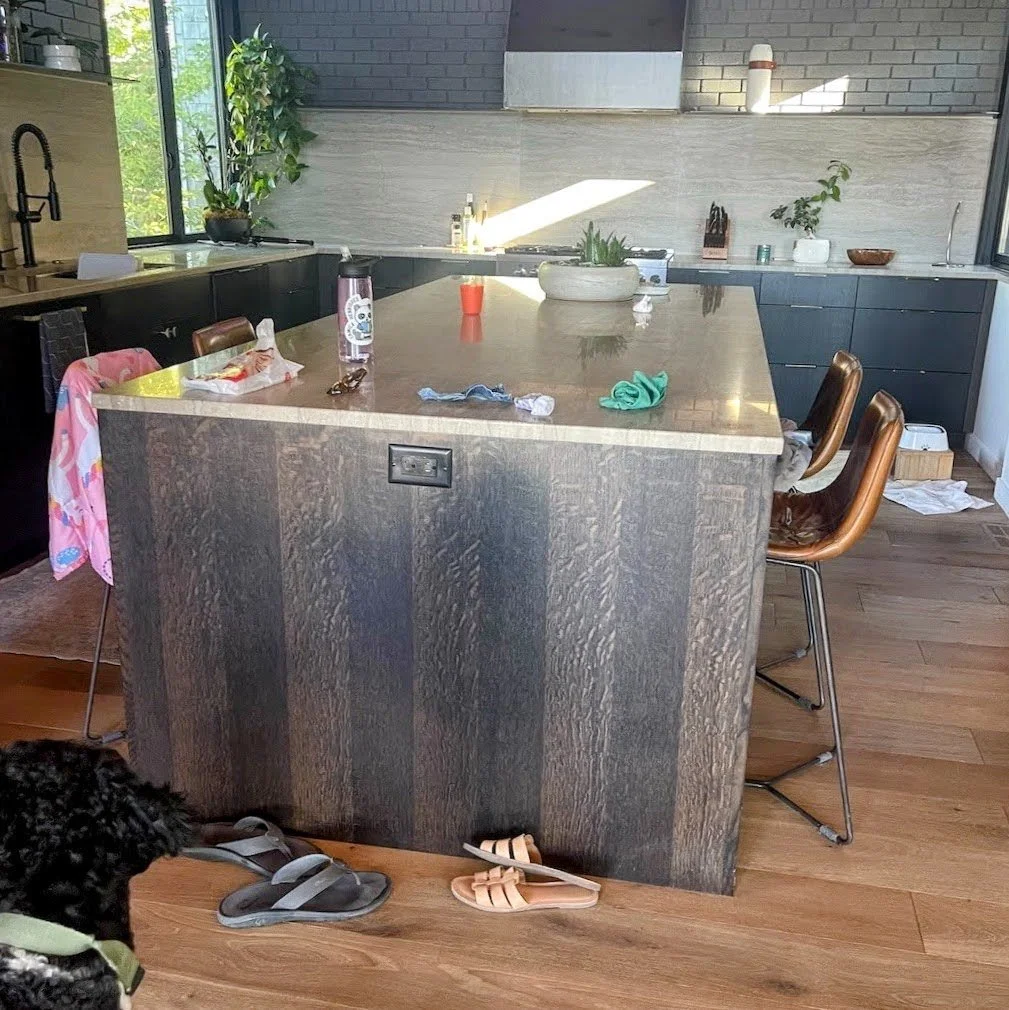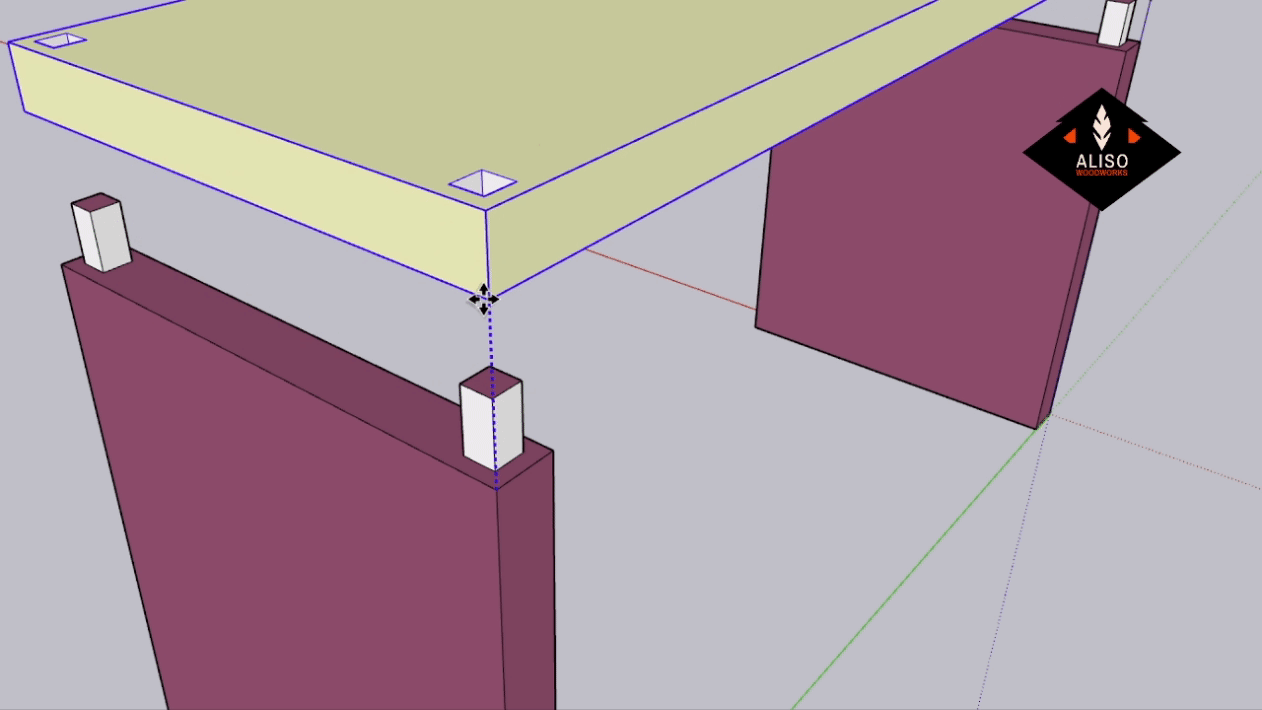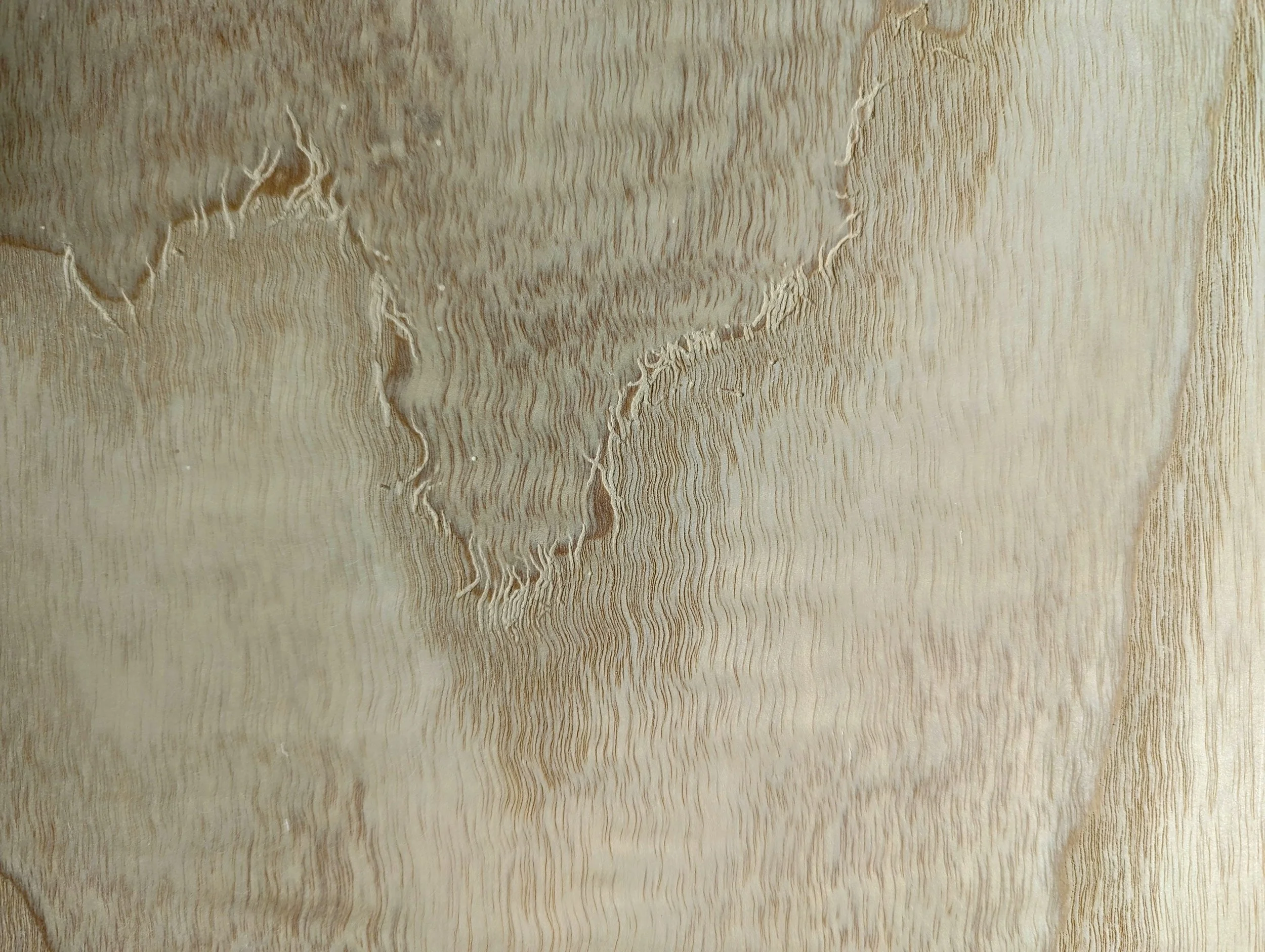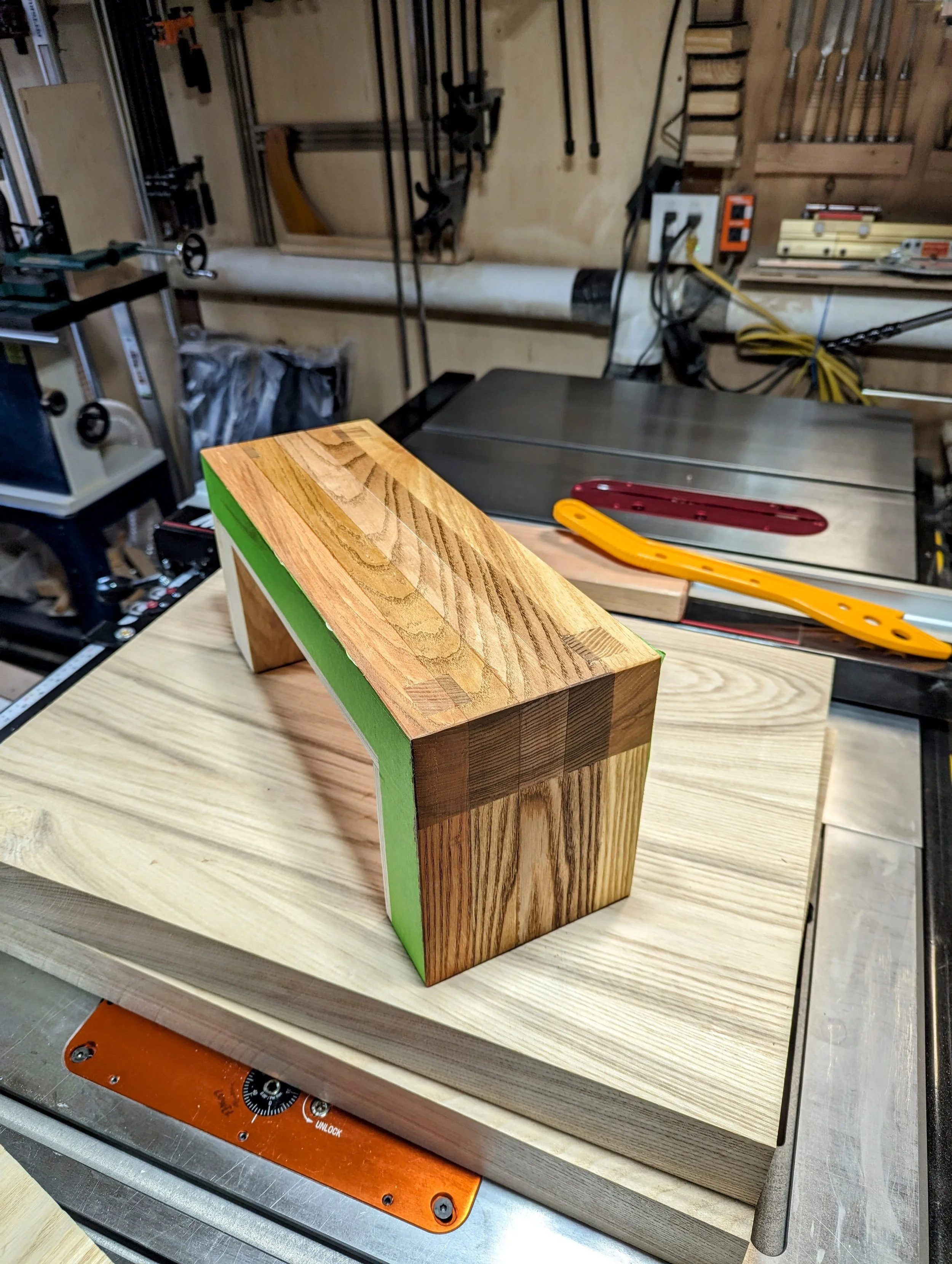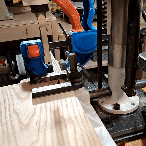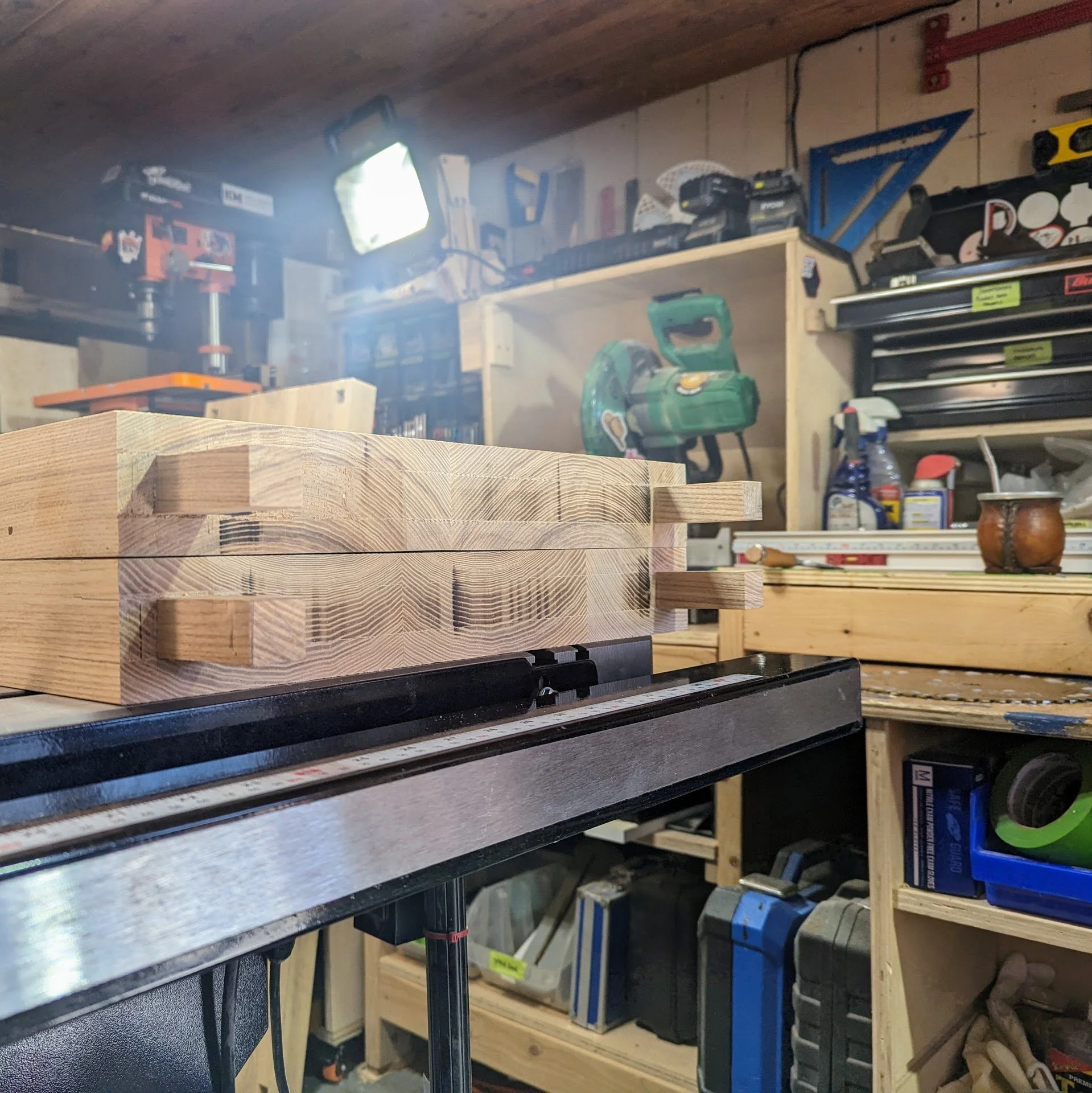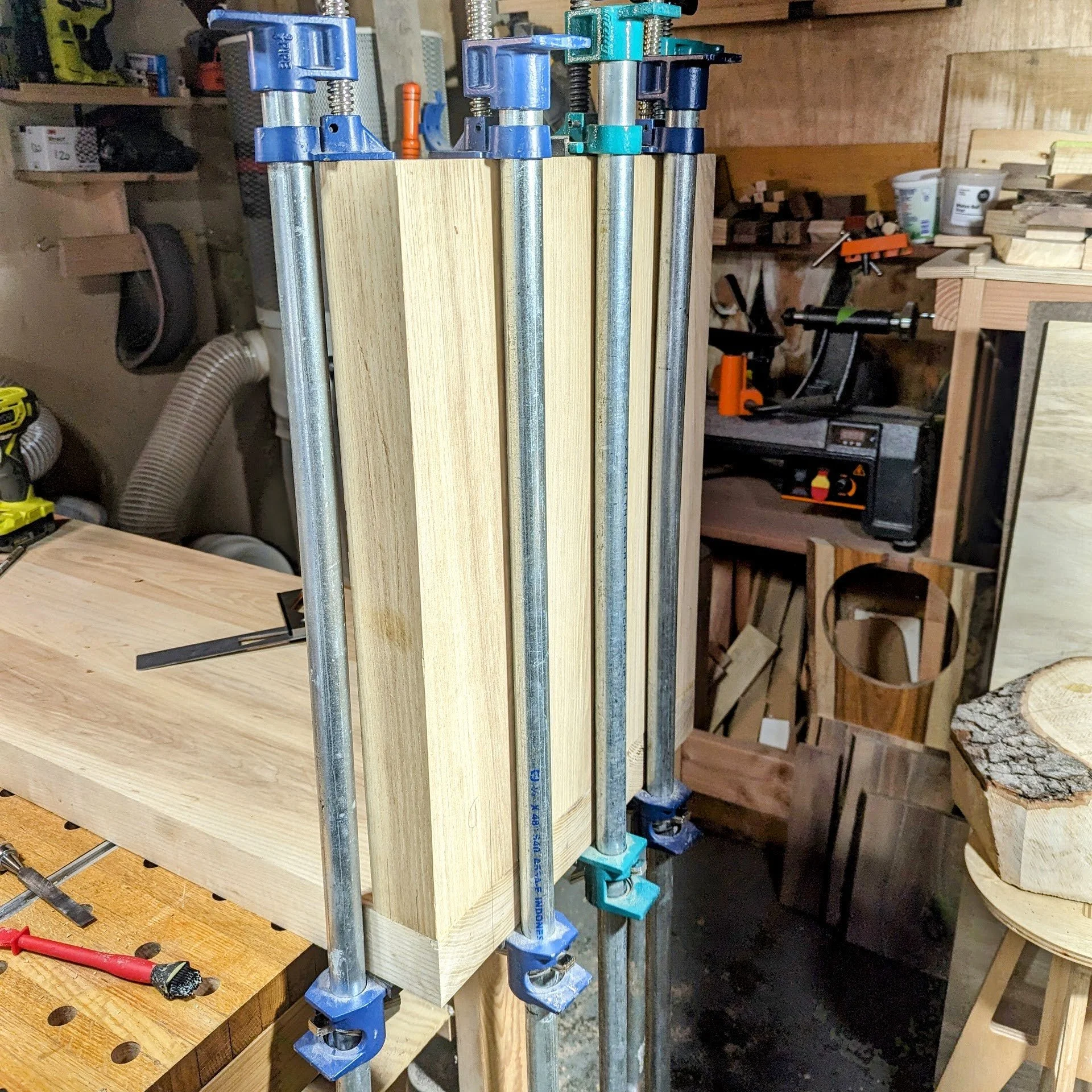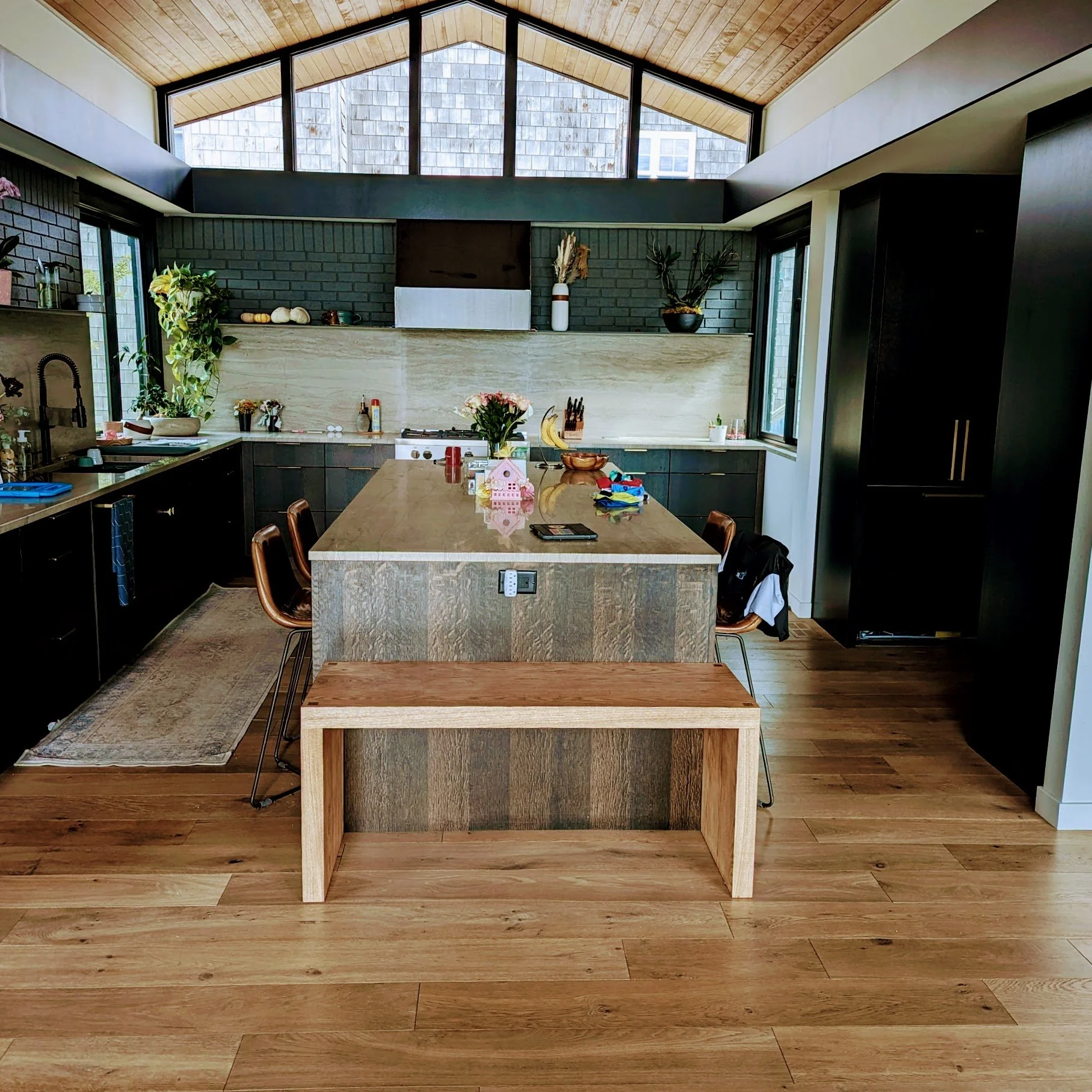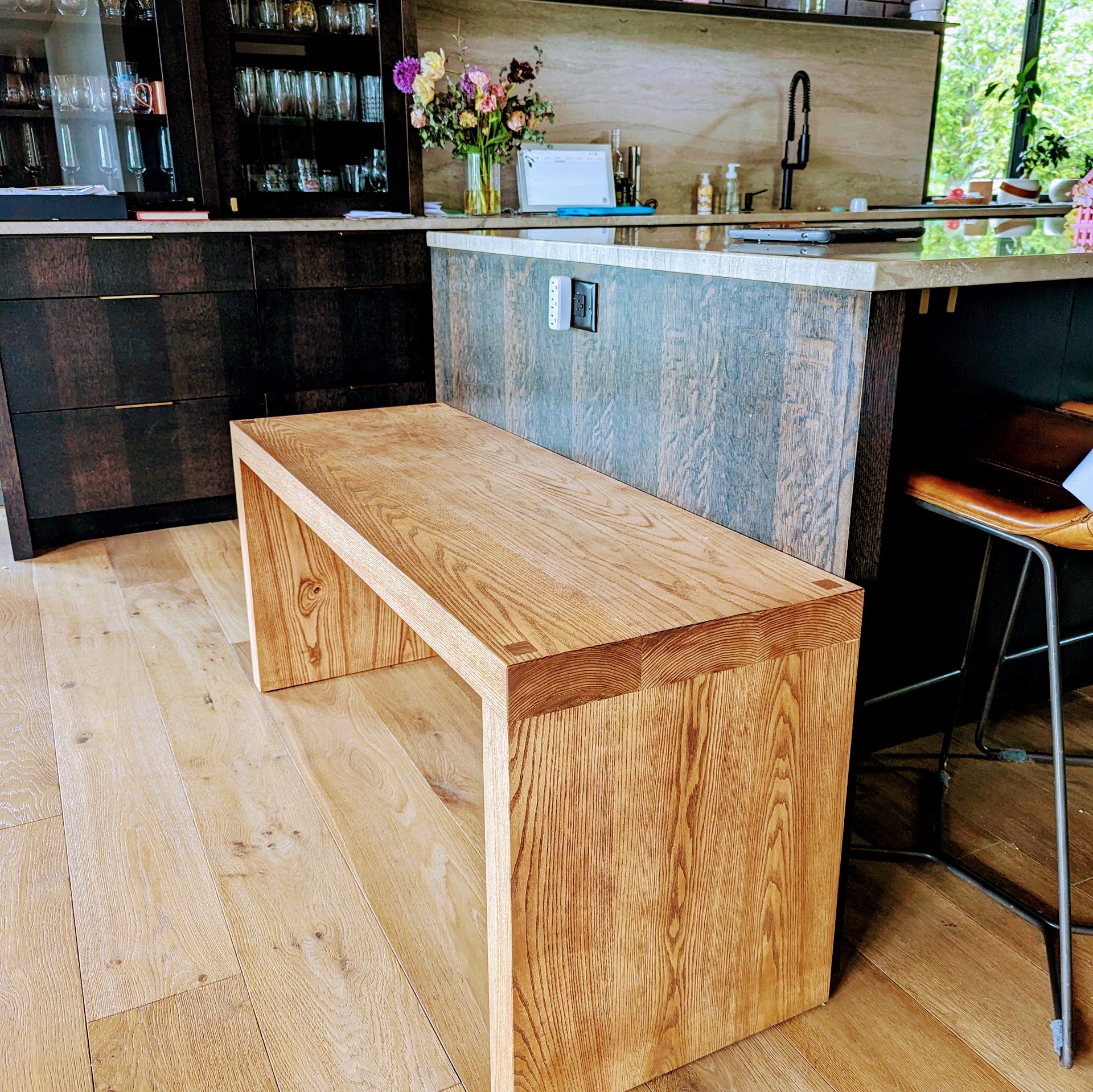
Oh, man! Everything about this house is beautiful. The architecture is sharp and polygonal, and there is so much natural light that the walls and floors can contrast nicely with a dark and deep grey. The kitchen is spacious and inviting. All of it, all of it is gorgeous. The island is beautiful, the stools are leathery deliciousness, the wood for the cabinetry is quarter-sawn white oak, the boards of the floor are wide and rich. Damn, even the dog, Jefe, is a thing of beauty. Of course, the family that inhabits this is beautiful. 🏡✨ #HomeGoals
Yet precisely because the island in the kitchen is the perfect hangout place, it can easily become the center of the mess. Backpacks, phones, shoes, you name it, all land there. Moreover, right now there are only 4 places available, and this is a big family. Here's where we come in. We are building a wide bench that serves as a seat when needed but also to put stuff on top of it so that it can help with the mess. The opportunity to do justice to this space is something I am truly grateful for. The challenge of matching the current level of awesome makes me at the same time excited and nervous which is the right place to be.
Let’s clean the mess!
The space is all clean lines and minimalism. Sharp edges rule the day, with polygons taking center stage over curves. But there's a subtle nod to classic Americana here. Those high, open windows in the ceilingcome s out of a fifties dream house. And as American as it gets, the wood is quarter-sawn oak. Options were limited, but I do believe that constraints breed creativity.
We went for a simple design: three boards, two joints. No fancy cuts, bevels, or miters here. Wood and function are meant to be the stars of the show. Both location and purpose drove dimensions. The bench needed to match the island's width, be tall enough to play nice with the stools, and wide enough to become a storage superhero (backpacks, jackets, toys, etc.). This translates to a beast of a bench: 50 inches long, 17.5 inches deep, 23 inches tall, and a chunky 2.25 inches thick.
To bring all these elements together, we had to make some decisions. Ash became the wood of choice, offering a classic American vibe (think baseball bat ) with the strength and durability of oak, all while giving us tons of color options down the road. The engineering followed the same idea - we ditched anything metal or modern and went old-school with classic tenon and mortise joinery.
Here's where a cool detail emerged: square tenons on each leg corner, peeking out from the top. This creates a neat symmetry between the board sides and those four little squares up top, with everything on display - no secrets here. Design-wise, it was more straightforward, but manufacturing-wise it was way trickier. Complex designs can hide flaws, but with simplicity, perfection is the only option. It's like baking a pie - a crazy one can hide a few mistakes, but a classic pecan needs to be flawless. That's the approach we're taking. LET'S DO THIS! ️
With the design ready, it was time to get into building. Sharp lines and squareness are easy to achieve on the final design. Yet, the squareness of the square holes had to be precise. We needed to create 4 exact square holes. 🛠️ There was another question mark that needed a solution: the final color. 🎨 This presented an opportunity. I love building mini prototypes of the projects I am working on. They allow me to refine the process of building before the actual building happens. So I dove into building a tiny mini bench. It would allow me to calibrate the machine I would use for the square holes and serve as a sampler for different colors.
I’ll be honest, I made ALL the mistakes, some on purpose, some by idiocy. 😅 I learned a lot, tried different colors, and came out with a gorgeous tiny fat mini bench. 🪚 When it was done, I delivered it to Ali’s house. They chose Odie’s Oil with Pecan pigment as the final color.
I was ready and pumped now to build this beautiful chocolate pecan massive bench! 🌳
The build was a blast. The milling process was cool and uneventful, and the wood behaved nicely—no warps, no cups, no chips, just pure butter. 😎 Moreover, all the preparation work paid off. The technicalities were all taken care of with the prototype. And so, after I had the panels ready for assembly, the only thing left was muscle work. 💪 This bench is 2 1/4 inches thick, and the panels are heavy as heck. Nothing needed to be forced more than usual; apart from minor cosmetic mistakes, everything went smoothly. Yet in woodworking, one has to tell the wood where to go, and the force required for that is proportional to the weight and hardness of the material. This ash was exactly as we wanted it—dense and hard—so it required that I met the challenge with a fair dose of zercher squats, what climbers call opposition grabs, and a fair amount of grunting. 🏋️♂️🌳 With the bench built, I feared the bench was a tad too tall, so with Ali, we decided to just measure it in place. Before it was oiled and stained, I took it to its forever home, measured it, and decided to shave off an inch. Once that was done, all that was left was to give it a last sanding pass and oil it till it was smooth as butter.
Andy Warhol famously said: "Everything has its beauty, but not everyone sees it." People often confuse that with everything is beautiful, which is not true; otherwise, we could not distinguish ugly from beautiful. The main objective of this bench was to simplify the design to its minimal constituent, just highlighting its structure and letting it be. I realized in doing so that simplification makes you find the fundamental beauty of the object. And so, when I delivered that bench, I could see that in place. It was a beautiful thing, humongous and square, at the same time hard and soft. The goal is that it helps the beautiful family that lives in this space to enjoy the space even more and to highlight the beautiful objects that fill it.


